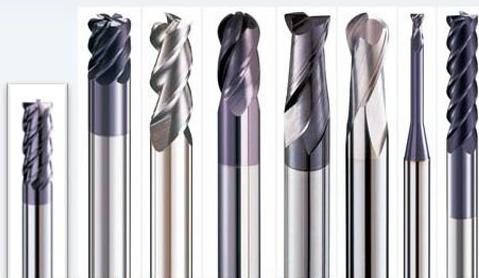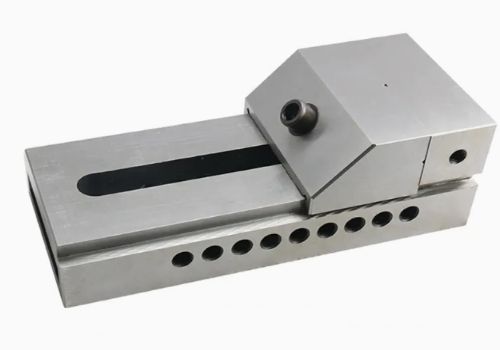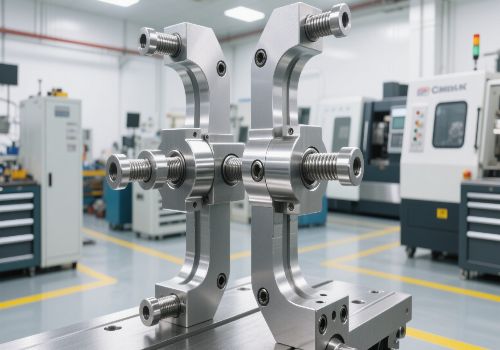When the tungsten steel milling cutter is milling, the cutting edge that participates in the cutting is long and has no free travel, so the productivity is high. There are many types of milling cutters, and their structures are different. The application range is wide. According to their applications, they can be divided into three types: milling cutters for machining planes, milling cutters for machining grooves, and milling cutters for forming surface.
General-purpose milling cutters have been standardized and are generally produced by professional tool factories. Now introduce several common milling cutters.
The first type: end mill
End mill is the most widely used milling cutter on CNC machine tools. There are cutters on the cylindrical surface and end face of the end mill. The cutting edge on the cylindrical surface is the main cutting edge, and the minor cutting edge is distributed on the end face. The cutting edge is generally a helical tooth, which can improve the cutting stability and improve the machining accuracy. They can be cut at the same time or cut separately. However, since there is no cutting edge at the center of the end face of the ordinary end mill, the end mill can not be used for axial feed when working, and the end face is mainly used to machine the bottom plane perpendicular to the side. Mainly used for face milling, groove milling, step surface milling and copy milling.
The second type: three-sided milling cutter
The three-sided milling cutter is referred to as the three-sided blade: the three cutting edges have a back angle, the cutting edge is sharp, and the cutting is light. The three-sided edge milling cutter can be divided into three straight edges of straight teeth and three sides of staggered teeth. It is mainly used to machine stepped surfaces and shallow grooves running through one or both ends on a horizontal milling machine. In addition to the main cutting edge on the circumference, the three-sided edge milling cutter also has a secondary cutting edge on both sides, thereby improving the cutting conditions, improving the cutting efficiency and reducing the surface roughness value. However, the width dimension of the re-grinding varies greatly, and the three-sided milling cutter can solve this problem.
The third type: face milling cutter
The face milling cutter and the vertical end face and the outer circle of the tool holder have cutting edges, which are mainly used for milling planes. The outer cutting edge is the main cutting edge, and the cutting edge of the end face acts like a scraper. The face milling cutter has a shorter blade edge than the sleeve end mill. Face milling cutters are mainly used for machining step faces and planes on vertical milling machines or horizontal milling machines. They are especially suitable for machining larger planes. Face milling cutters with a 90° lead angle can mill a wider step surface at the bottom. The face milling cutter is used to machine the plane, and at the same time, the cutting teeth are more involved, and the secondary cutting edge is used for the light-repairing effect, so that the processing surface roughness value is small, so that a large cutting amount can be used, the productivity is high, and the application is wide.
The fourth type: Thread milling cutter
The traditional thread processing method mainly uses a thread turning tool to turn the thread or use taps, die manual tapping and buckle. With the development of CNC machining technology, especially the emergence of three-axis CNC machining system, the more advanced thread machining method – CNC milling of the thread can be realized. Compared with traditional thread processing, thread milling has great advantages in machining accuracy and machining efficiency, and is not limited by the thread structure and thread rotation during machining. For example, a thread milling cutter can process a variety of different directions. Internal and external threads. For the thread that does not allow the transition buckle or the undercut structure, the traditional turning method or taps and die are difficult to machine, but it is very easy to implement by CNC milling.
In addition, the durability of the thread milling cutter is ten or even ten times that of the tap, and in the process of numerically milling the thread, the adjustment of the thread diameter size is extremely convenient, which is difficult to achieve by taps and die. Due to the many advantages of thread milling, the milling process has been widely used in large-scale thread production in developed countries. With the development of CNC machine tools in China, it has gradually been accepted and loved by Chinese customers. Thread milling completes the thread milling operation by means of the three-axis linkage function of the CNC machining center machine and the G02 or G03 helical interpolation command.
Thread milling cutter, as an advanced tool developed rapidly in recent years, is being accepted more and more widely by enterprises, and exhibits excellent and extraordinary processing performance. It has become a powerful weapon for enterprises to reduce the cost of thread processing, improve efficiency, and solve the problem of thread processing.











